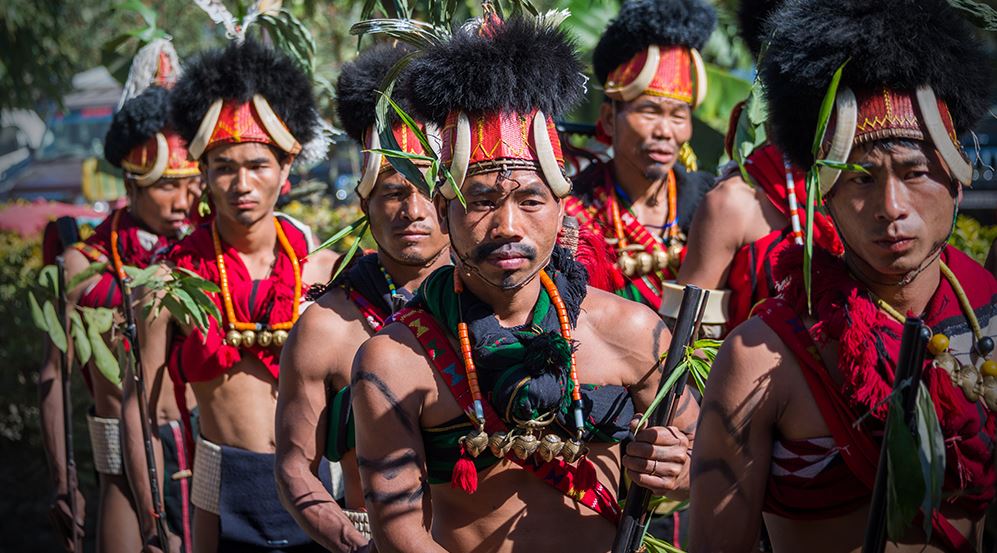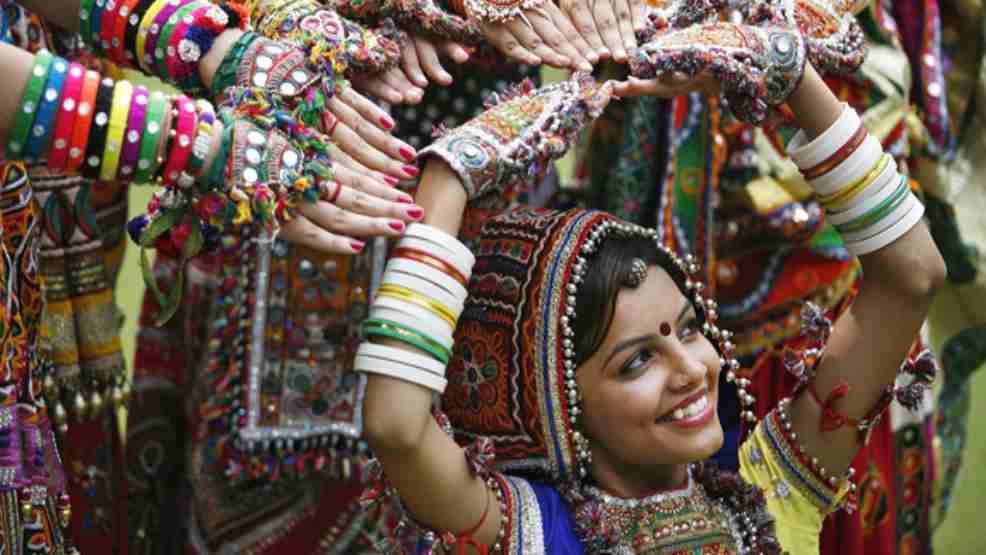- Get link
- X
- Other Apps
- Get link
- X
- Other Apps

Indian Tribal Images
Thanks to digitization, a fragile Tlingit ceremonial garment is once again teaching traditional weaving techniques. It was not a pretty robe when it arrived at the Alaska Native Heritage Center in Anchorage last spring. The tassels were frayed and twisted, the colors faded. The Tlingit ceremonial garment called a Naaxein or Chilkat robe was born from the hands of a Tlingit weaver around the year 1900. The weaving is exquisitely complex and beautiful, and very few examples of this technique remain. But its exile from Tlingit culture in the intervening century wrought heavily on its appearance. Now, the robe is almost too fragile to pick up. “Every time it’s flipped and moved, little pieces of it come off, because it’s in a pliable, fragile state,” explains museum curator Angie Demma. Worst of all, the robe hasn’t been worn, danced in, or loved by Alaska Native people in more than 120 years. Nor has it been able to pass on its knowledge of traditional weaving techniques. At least not until this past spring. The History of Chilkat Robes Chilkat robes are signs of wealth and status. It takes at least a year for a weaver to weave one. The twine, made of mountain goat wool and yellow cedar bark, is hand-spun on the weaver’s thigh, a few yards per day. Some estimates say it takes 500 hours to spin the twine and 2,500 hours to weave the robe. The robes are traditionally worn at... https://www.shutterstock.com/search/indian-tribal.

Images Of Tribes Of India With Their Names
the robe has accumulated its own stories and experiences as it traveled. Like so many Alaska Native people, the robe was displaced from its ancestral home, but eventually returned, and was welcomed. Now, in its old age, and thanks to digital technologies, the Chilkat robe teaches again. Sign up to receive email updates from YES! India is a dynamic mix of arts and crafts, where classical melodies blend effortlessly with a hypnotic mosaic of gorgeous paintings, ancient weaves and other handicrafts, divine dance forms, interesting festivals, and brilliant sculptures. This land glistens with vibrancy and vivacity, with ethnic flavours that grow at every turn in each of its states and union territories. Because of India’s long history, the love tale between her and her culture is timeless. Our country’s indigenous population is just another colourful feather in our country’s highly colourful cultural hat. India’s tribal culture, traditions, and practises pervade practically every facet of Indian culture and civilization. Indian tribal culture has seen a significant blending of cultures within its own people, from the Aryan, Dravidian to the Indo-Tibetan languages. Each tribe has its own different character that distinguishes it from the others. Despite the push towards modernization in the twenty-first century, the tribal communities of Chhattisgarh have managed to keep their unique identity and continue with their age-old practises among the vast number of tribes that exist across the country. The state is proud of its multi-millennia-old tribal tradition, as well... https://www.gettyimages.in/photos/tribals-india.
Indian tribal woman painting Rajamouli in Mumbai Getty Images There’s still potential there: As with “Parasite,” Rajamouli’s achievement is strong enough to crack several other categories, including director and screenplay, not to mention the numerous craft achievements that should position it alongside the likes of “Top Gun: Maverick.” For Variance Films president Dylan Marchetti, who has been running the “RRR” campaign in the U.S., the campaign has a long way to go. Marchetti, who oversaw the successful theatrical release of eventual Oscar winner “Drive My Car” last year, said that “RRR” will receive a significant Best Picture campaign, but he also saw potential for Best Original Song (“Naatu Naatu”), in addition to cinematography, production design, editing, and many other categories. The acting categories are competitive, but don’t count out a wild card slot that could favor Rao Jr. or Charam, who are both massive stars in South India.

Tribal images wallpaper Lac Courte Oreilles is also the name of a 5,139 acre lake located in Sawyer County. CADOTT, WISCONSIN: Decades after Jean Baptiste Cadotte, father of Michel, established a trading post on the Yellow River near modern Cadott, the village of Cadott was founded at its current site by Robert Marriner in 1865; Marriner named it "Cadotte Falls" after the earlier trading post. IN PHOTOS: Marge Hebbring shares family history of the Ojibwe and Cadotte’s Voyageurs of the Chippewa Voyageurs of the Chippewa, Founders. Hebbring is second from the left. Courtesy Hebbring in tribal clothes Madeline Island, WI was named after Madeline Equaysayway Cadotte who was the daughter of the head of the White Crane clan. Men from this clan were the hereditary Chiefs of the Lake Superior Ojibwe tribe.

Tribal Photo Gallery
also a descendent of Michel Cadotte and Equaysayway Cadotte. Above, Hebbring shows photos of her ancestors. Audrey Korte History in black and white Marge Hebbring is on a mission to keep her heritage and family history alive. Hebbring, a 73-year-old resident of Chippewa Falls, is a member of the Ojibwe tribe in northwestern Wisconsin. Ojibwe and Chippewa are versions of the same word, pronounced differently because of English and French accents. Hebbring is also a descendent of Michel Cadotte and Equaysayway Cadotte. Above, Hebbring shows photos of her ancestors. Audrey Korte The Council Oak tree at UW-Eau Claire In the 1980s Hebbring and other students and staff at the University of Wisconsin - Eau Claire, worked to save the Council Oak from being destroyed by a proposed new student center. The oak had stood for hundreds of years but was hit by lightning and destroyed. The university planted another and it died. They planted more which also died. They finally invited tribal elders to come plant a new Oak which flourished, Hebbring said. The tree is part of the university’s emblem. Courtesy Hebbring and photo of the Council Oak Hebbring holds a photo of the Council Oak from the 1980s. Audrey Korte Get local news delivered to your inbox! Audrey Korte News Reporter I’m a graduate of Wichita State University. I’ve traveled to France, Turkey and Sierra Leone and lived in Kansas, Kentucky, Maryland, Massachusetts, Rhode Island, Maine, Connecticut,... .

Tribes Of India
50 kilometres, rising 1,220 metres in altitude, between Munsyari and Milam – the highest village in the Johar Valley that is still inhabited. Men and women, including the elderly for as long as they are able, continue this gruelling journey on precarious terrain, navigating narrow paths at the edge of precipices, through rockfalls and rain; wading across streams that sweep away old paths and create new routes nearly every season; and passing through valleys of awe-inspiring vastness and unmatched beauty. Photographs of people travelling through fields in the Johar Valley in June 2001 on the way to Milam. Credit: Shikha Tripathi / The Third Pole. *The originals were taken by local guide and regional expert Jagdish Bhatt and have been reproduced with his permission. A young man carrying his grandmother to the Johar Valley in May 2022. Elderly members of the Bhutia community make the annual migration for as long as they are able. Credit: Shikha Tripathi / The Third Pole. The changing climate in the high Himalayas, however, has made this journey harder and more unpredictable. By 2012, the average annual temperature in Pithoragarh, the district where Munsyari lies, was 0.58 degrees Celsius higher than it was in 1911 – a bigger increase than any other district in the state. Rainfall has become more erratic. “Earlier, we could plan and prepare better for migration. Now it rains when we least expect it, making the journey that much tougher to make with all our rations and supplies,” says... .
Comments
Post a Comment